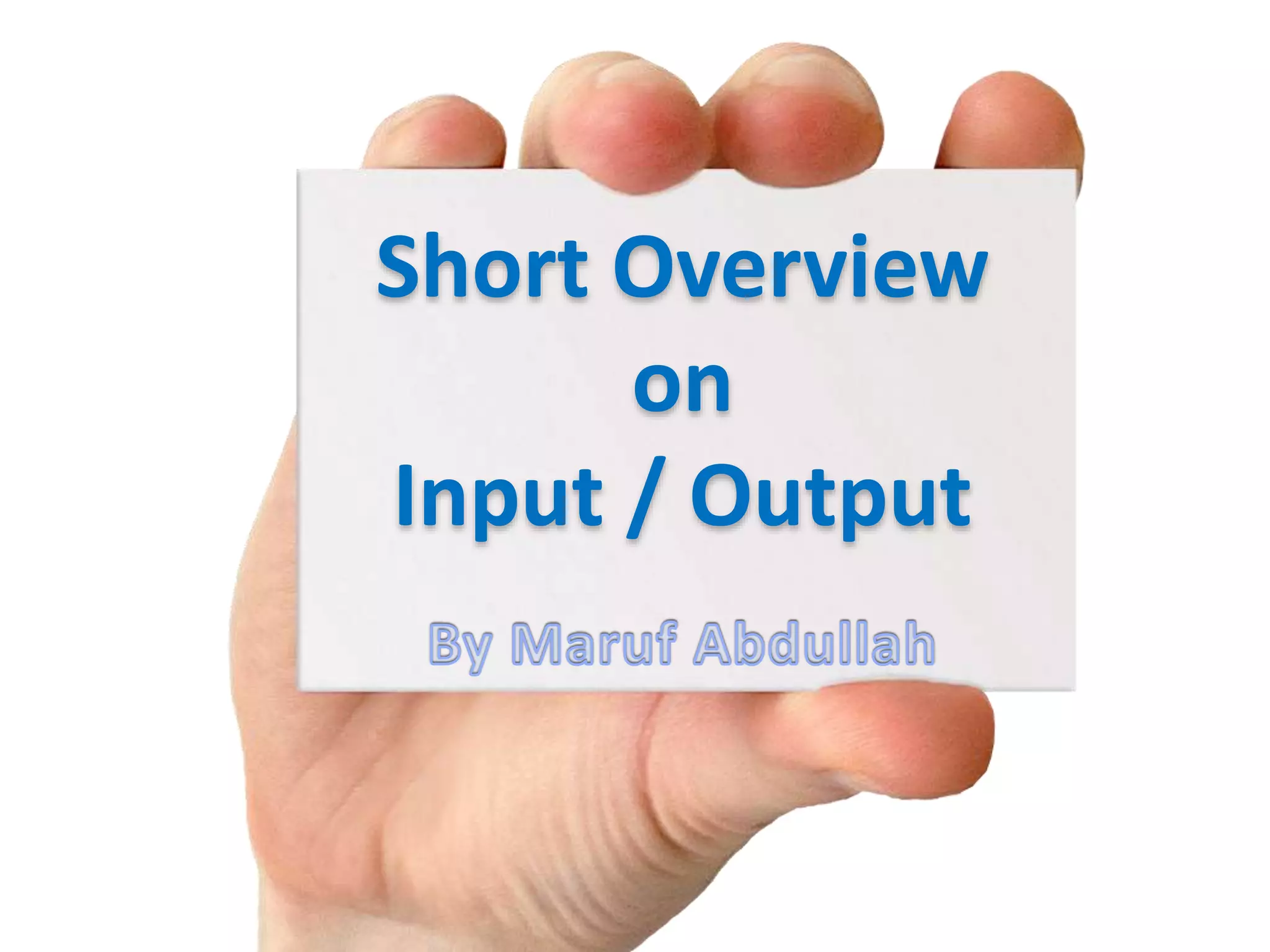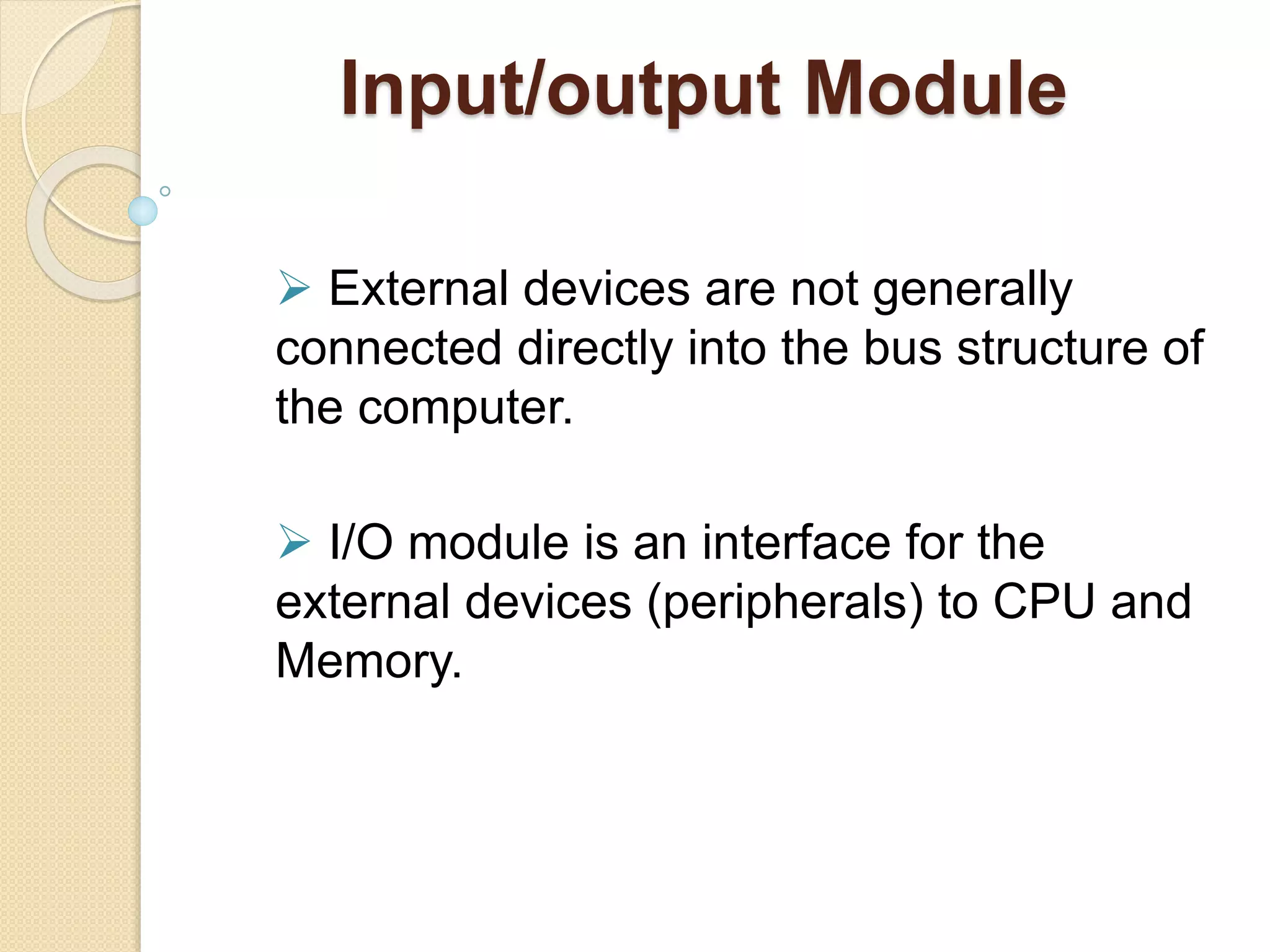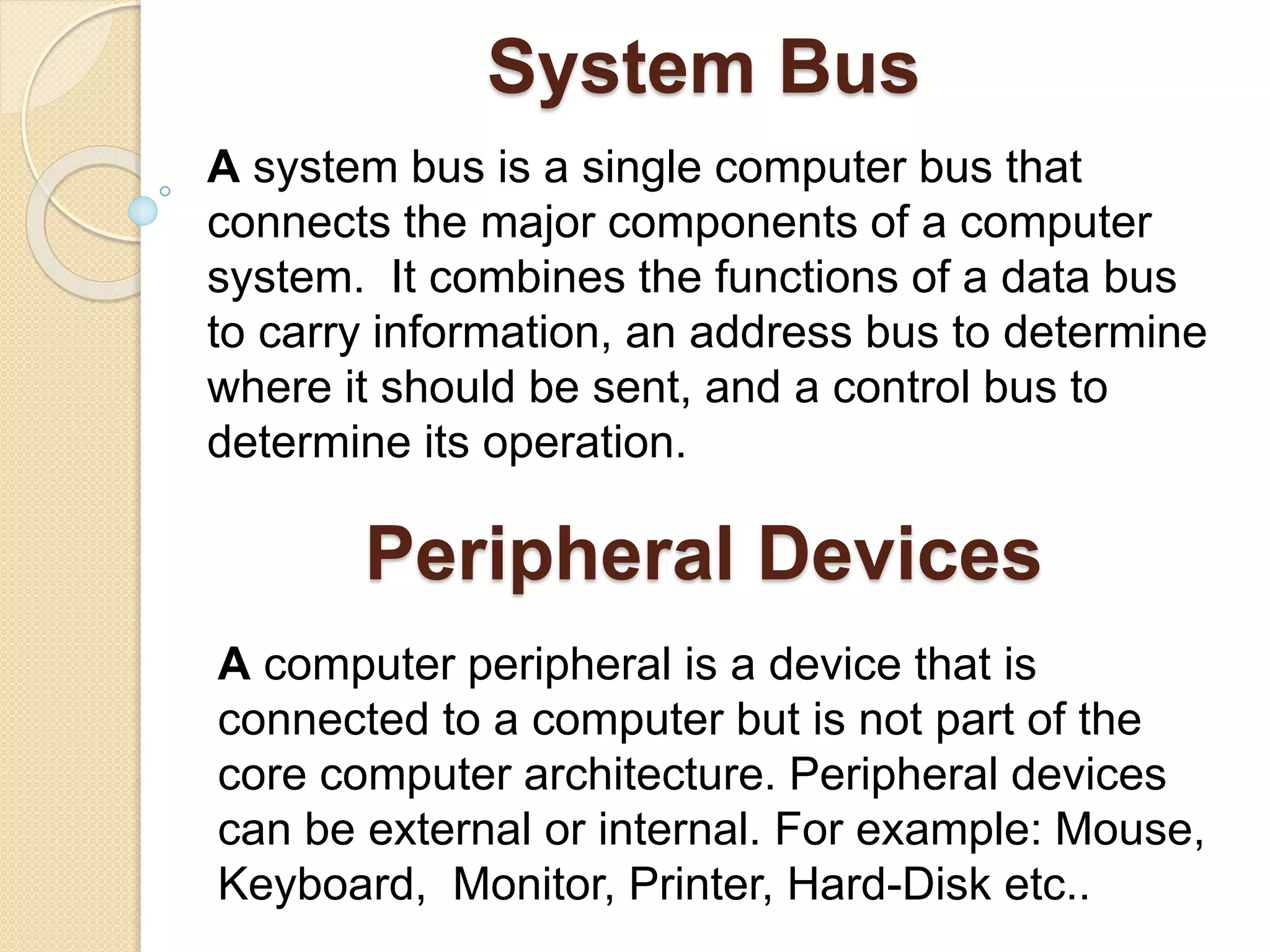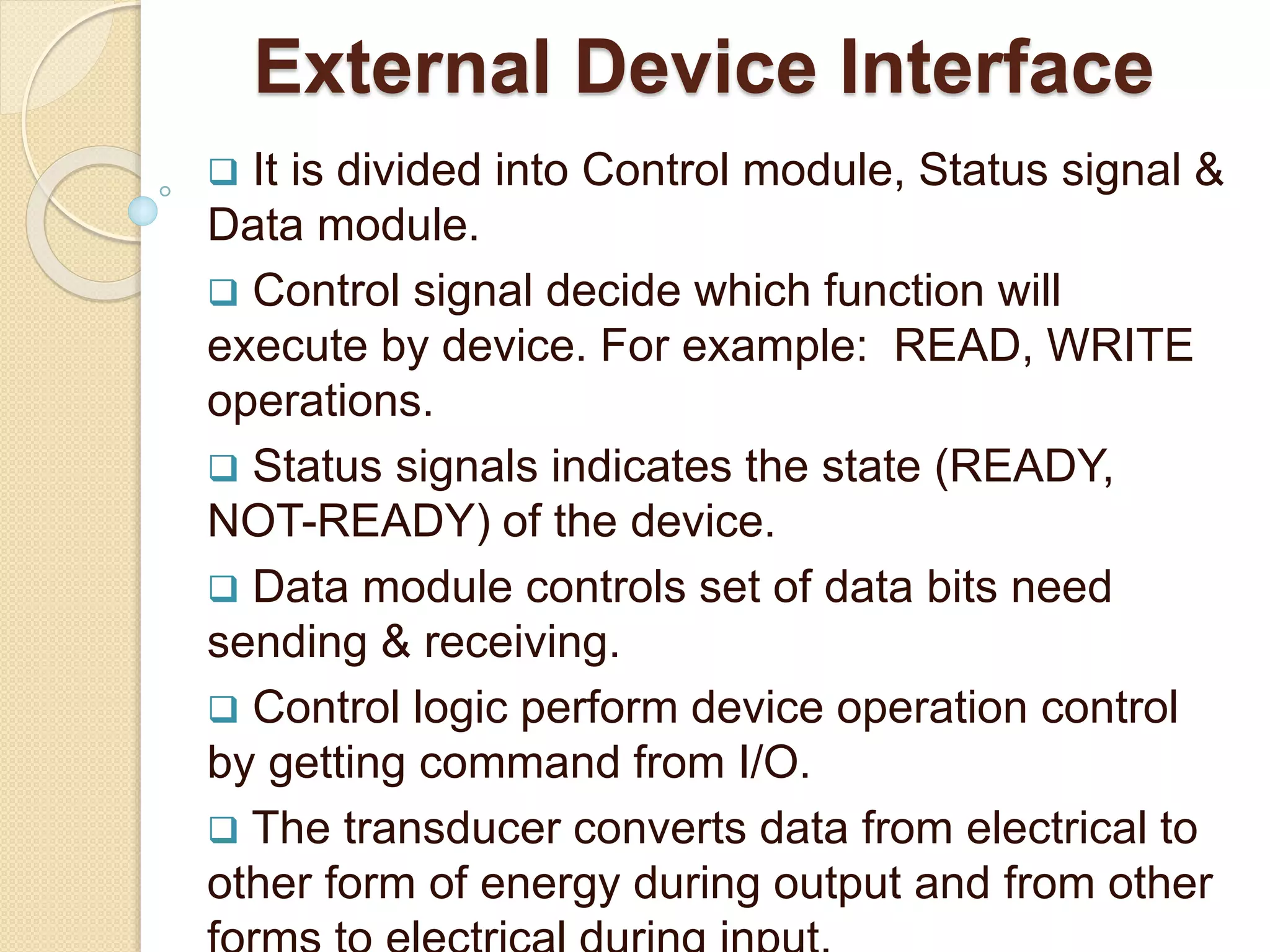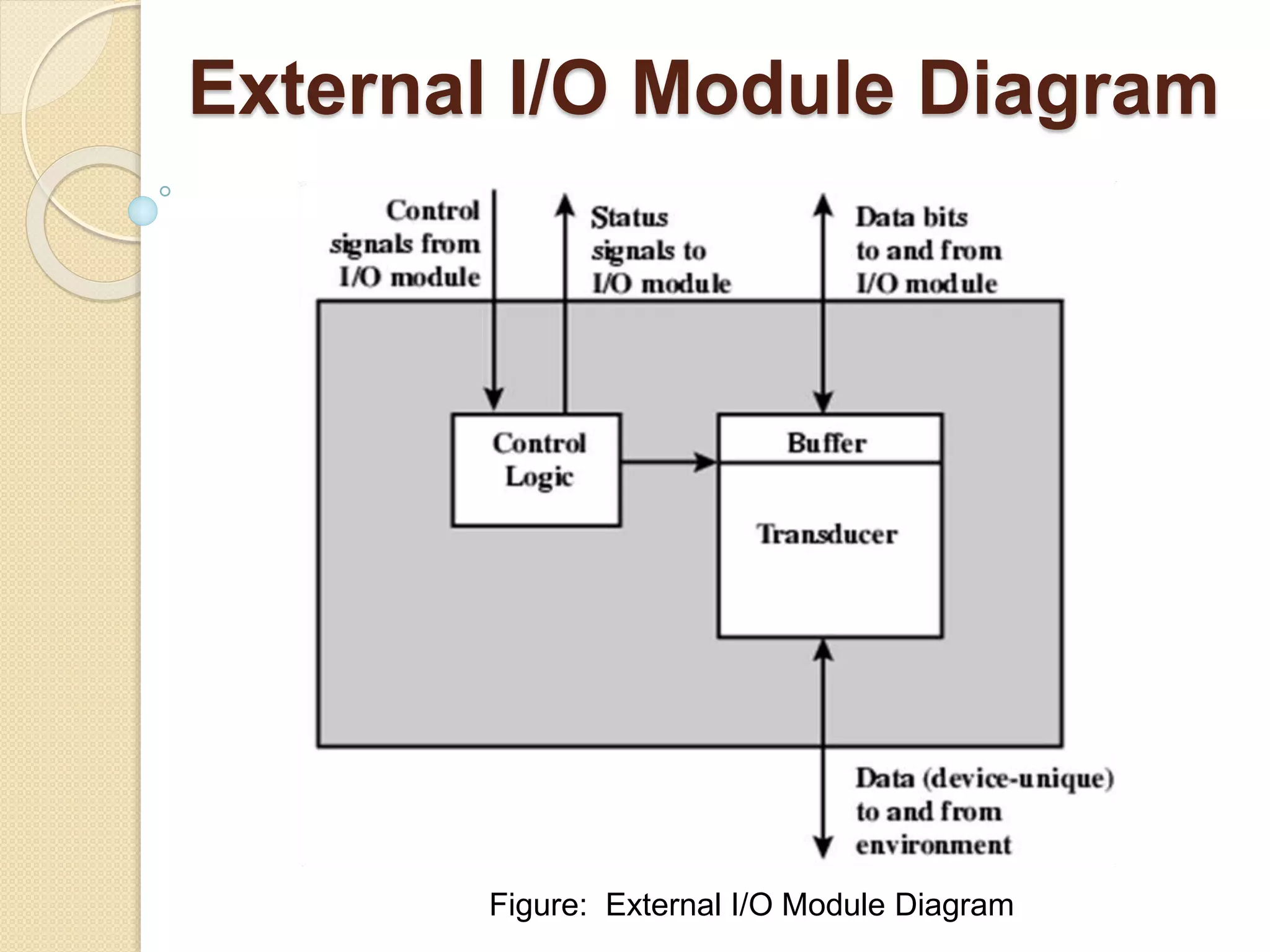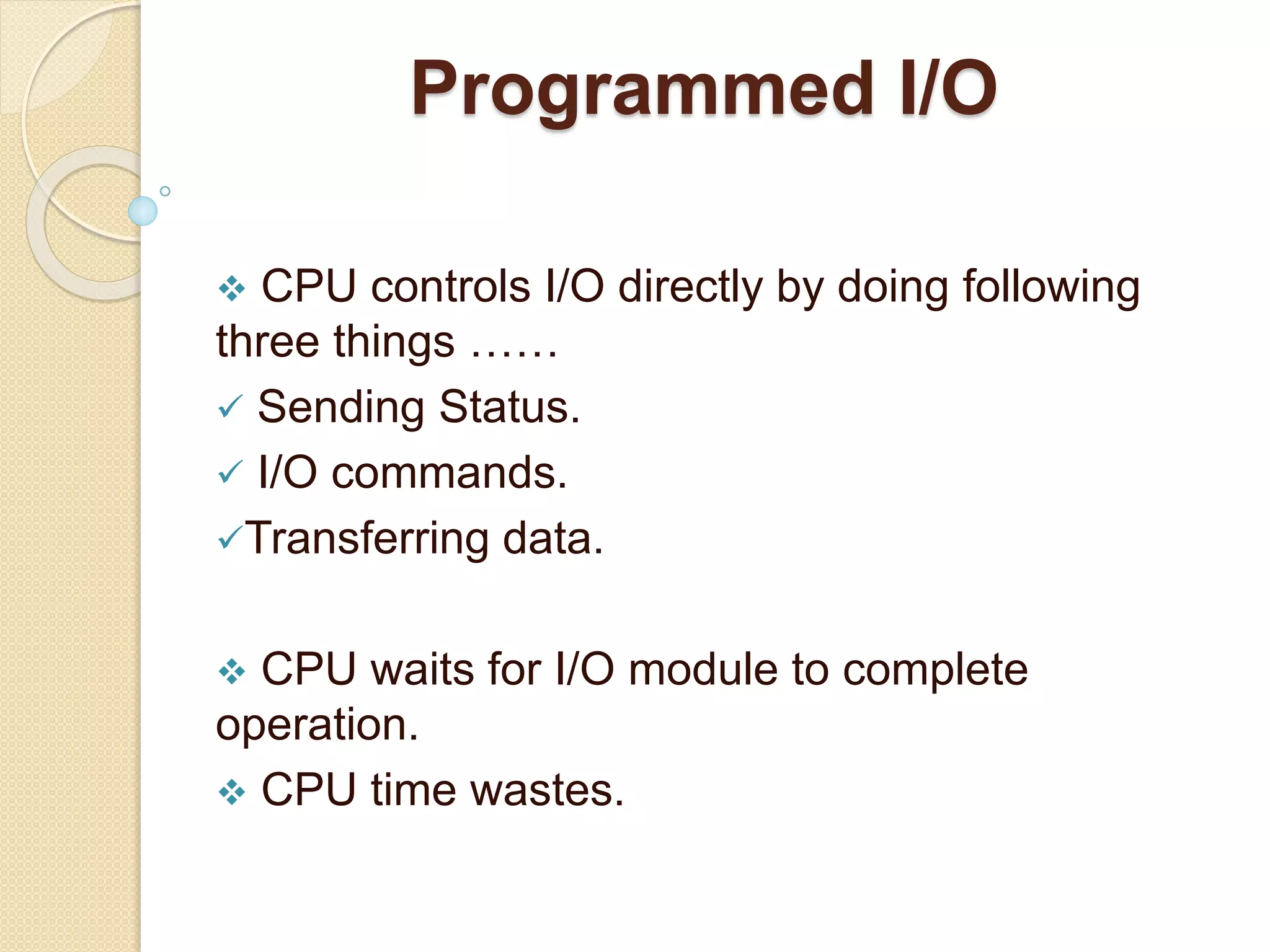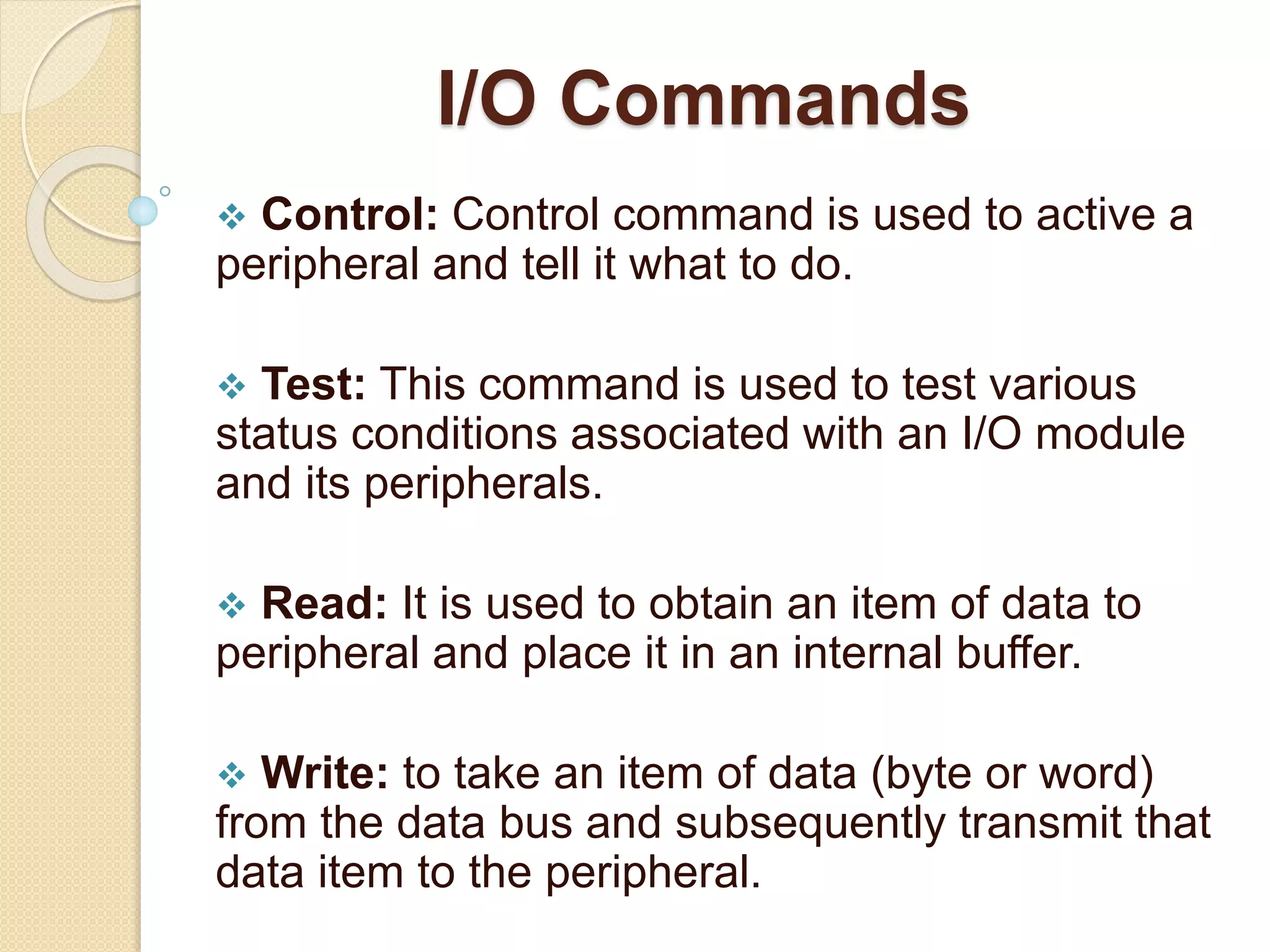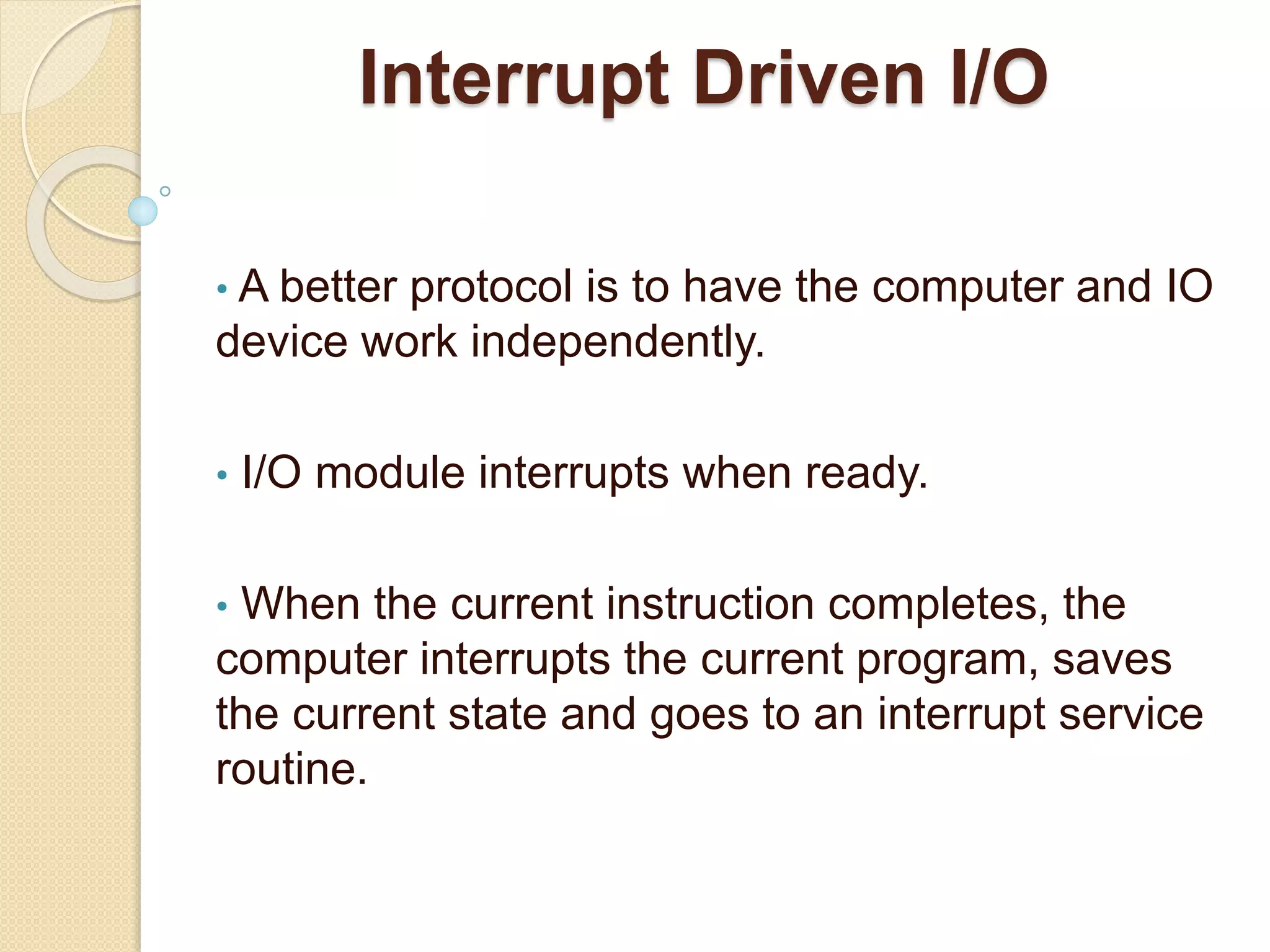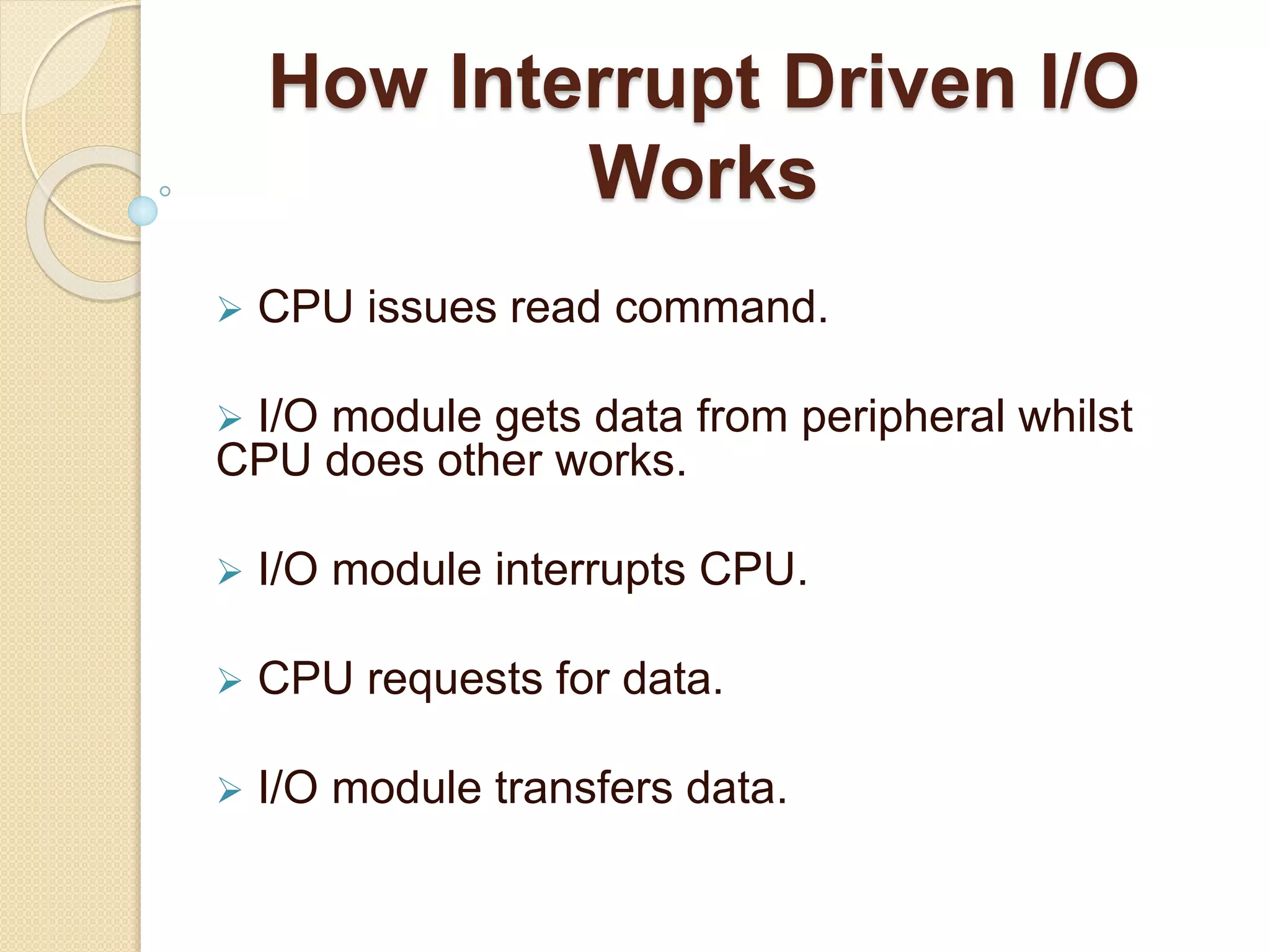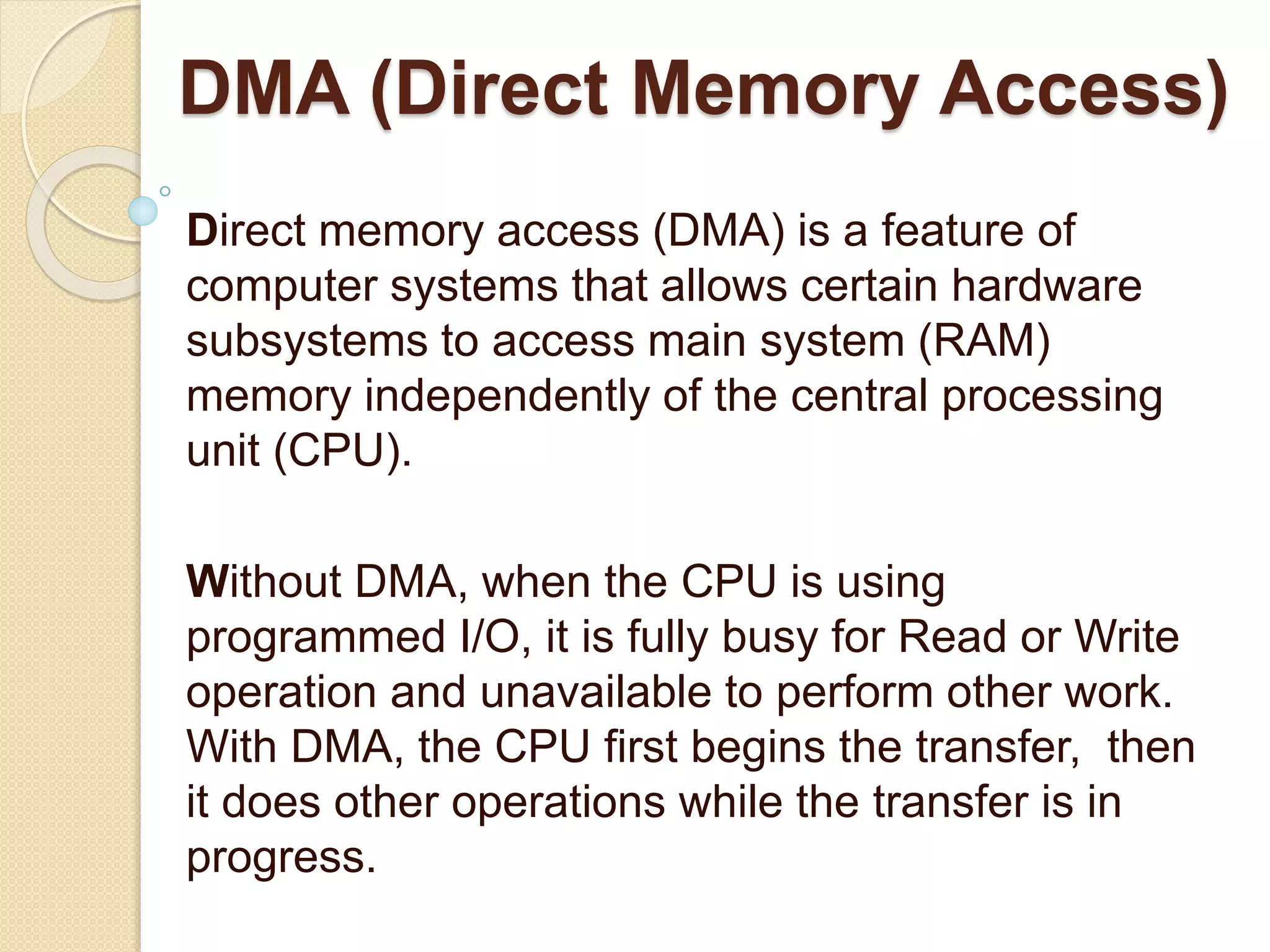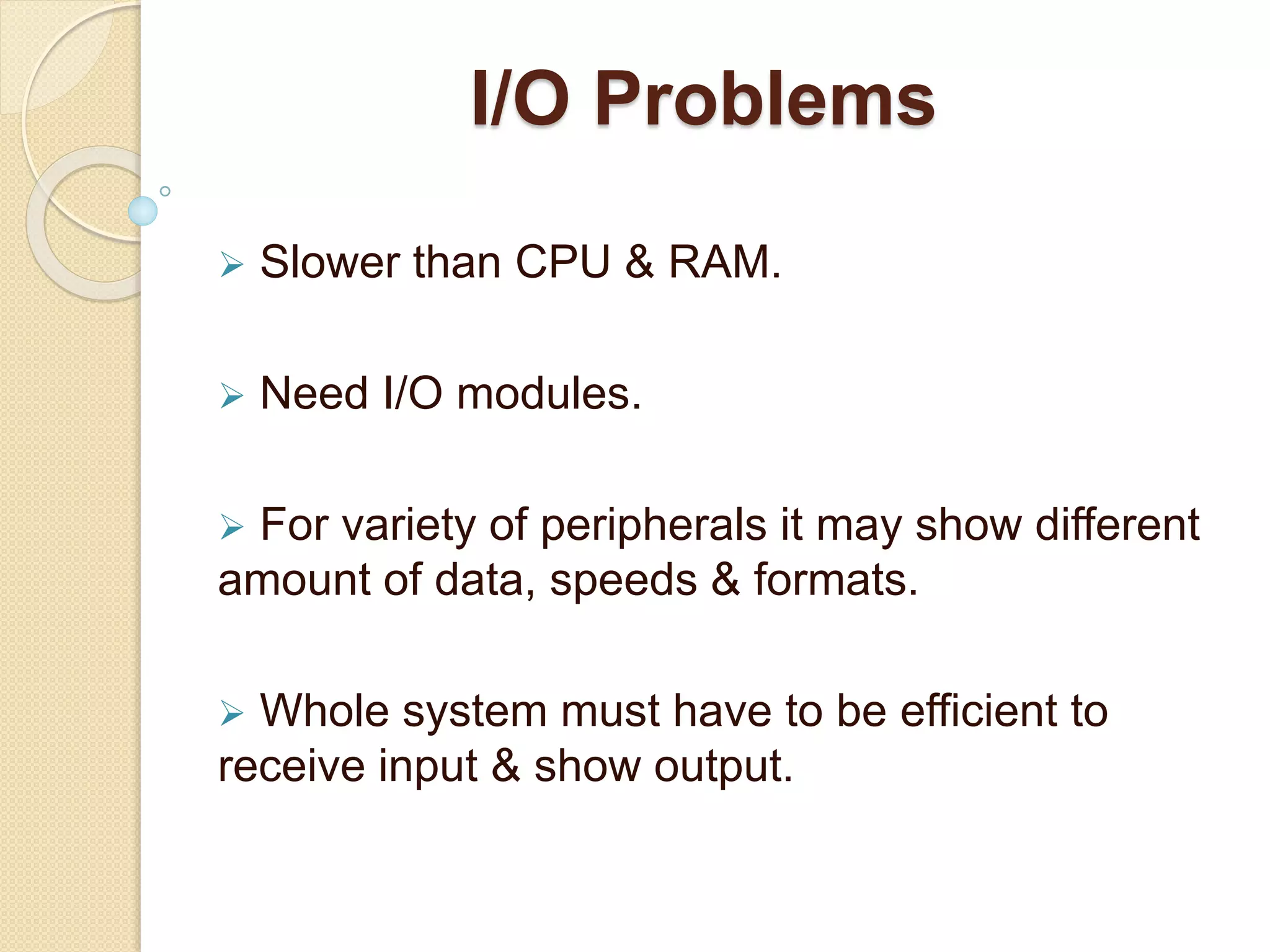The document provides an overview of computer architecture and input/output techniques. It defines computer architecture as the set of instructions that describe a computer's organization and implementation. It discusses how I/O modules interface external devices like keyboards and printers to the CPU and memory. There are three main I/O techniques: programmed I/O where the CPU directly controls I/O, interrupt-driven I/O where devices interrupt the CPU when ready, and DMA where devices access memory independently of the CPU to improve efficiency. The document outlines the components and functioning of I/O modules and the various I/O commands used to control peripheral devices.
